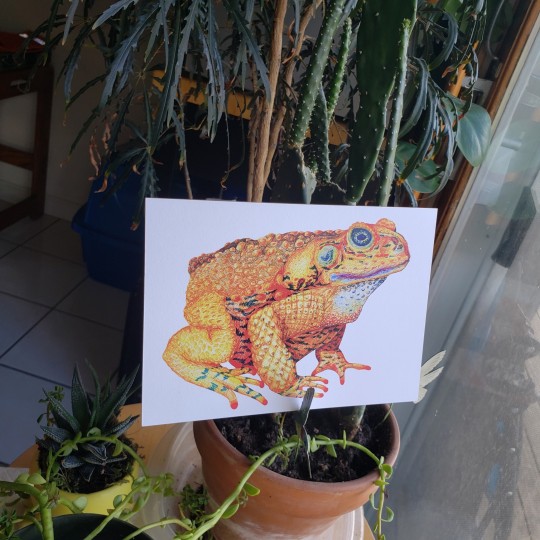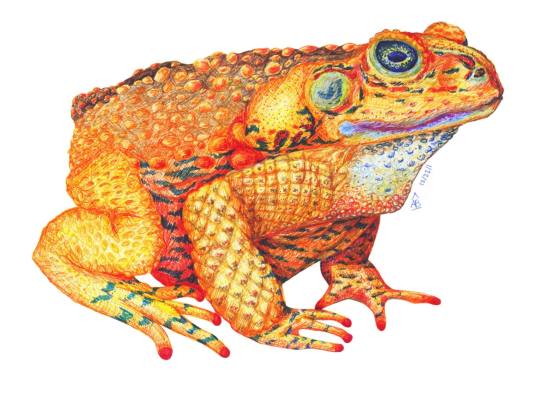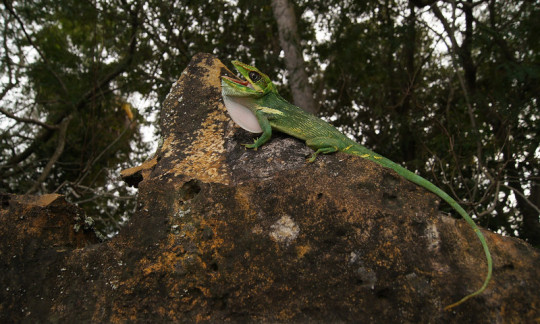#invasive reptiles
Note
this question is a major downer, so tw for animal death.
is there a more humane way to deal with invasive reptiles outside of just culling them? i hate the idea that the only way to fix the issue is to kill animals that didn't even ask to be there in the first place. obviously they can't be pets because they aren't socialized, but would it be possible to have sanctuaries for them, where they can live comfortably without damaging the environment? i know i'm being naive here, but i'd like to think it'd be worth a try. i know it'd only save a couple hundred at absolute best, but the idea that they're all just doomed due to situations outside of their control is so upsetting. odds are this is just a reality i'll have to get used to, but i want to know your thoughts on it.
sorry for the sad question, i know talking about these things is just depressing as hell when you're a reptile lover who also cares about the environment as a whole.
This is one of the really tough things about invasive species. Unfortunately, in most cases, I think culling is just the all-around best option.
Sometimes, invasive lizards especially can be taken from the wild to be pets - can't just leave 'em in the wild, after all, and some wild-caught lizards (like house geckos and anoles) tend to do pretty well in captivity. Check out my invasive reptiles tag for some potential invasive pets. This is the only case where I'll ever be okay with taking wild animals for pets, and even these will usually be hands-off pets, but it's better than leaving them in the wild as long as you know what you're doing and the care is appropriate. In fact, if you catch an invasive reptile, it's actually illegal to release them!
Usually, though, culling is the best option. I know it's super sad - it makes me sad, too! Burmese pythons especially tend to hit me super hard, I adore Burms...but I adore them at zoos or in the homes of qualified keepers, not in the Everglades, y'know? As much as I'd like to set up a Burmese python sanctuary, that's just a lot of resources going away from native reptiles, and it's a small dent in the number of invasive snakes at best.
One thing that helps me with this sad situation is remembering that animals don't really conceptualize death the way we do. When we cull an invasive reptile, we're not only helping a local ecosystem get back on balance, we're also preventing the invasive reptile from having to live in an area where it's just not meant to be. Animals don't feel death, but I know it's hard to remember that we're honestly the ones who worry the most about this scenario.
107 notes
·
View notes
Text
So I've moved into another complex, finally, and there's this huge lizard several folks keep seeing. It's elusive and fast, and I managed to get two pics from a distance, which really only give you an idea of its size. It doesn't look like any of the invasive lizards that are moving north from South Florida: two of which have been spotted in my county. That's the Tegu, and the Brown Basilisk. I'm not sure what this is, but it's 10-12" long! **Update** I'd sent an email with attached pics to an Invasive Species Research group at U of F, and a Dr Johnson got back with me. This is a Peter's Rock Agama lizard native to Sub-Saharan Africa, Asia, and Australia. There is a breeding population in Florida though...of course there is! 🙄



#lizards#lizard#invasive reptiles#invasive lizards#titusville#spacecoast#florida#brevardcounty#centralflorida#reptiles
3 notes
·
View notes
Text

The eye of an invasive green iguana (Iguana iguana) in Florida's Everglades National Park, USA
by Cath Dominguez
#green iguana#iguanas#lizards#reptiles#iguana iguana#iguana#iguanidae#squamata#reptilia#chordata#wildlife: florida#wildlife: usa#wildlife: north america#invasive species#details
109 notes
·
View notes
Text
The universe has decided to make me a gecko owner
#saw a gecko#you're supposed to kill them because they're invasive here#or keep them#and i dont wanna kill it#and i just so happen to have a reptile tank#ren won't shut up#name suggestions?
80 notes
·
View notes
Text

An agama lizard maybe contemplating how it got to
Florida Everglades. Yep, another invasive species
in Florida
#invasive species#agama#reptile#original photography#photographers on tumblr#nature photography#everglades national park#florida#4:3 photography#om system#om 1#rafefar
22 notes
·
View notes
Text

ヤエヤマイシガメ
道路横断中。事故に注意です。
R5.4
#ヤエヤマイシガメ#カメ#亀#イシガメ#爬虫類#生き物#自然#nature#写真#photography#animal#reptile#turtle#invasive species#invertebrate
62 notes
·
View notes
Text




9 notes
·
View notes
Text
2023 Reading Log pt. 4
March was hard for me, both in terms of my personal life and in terms of my reading. I started a whole bunch of books that I haven't finished. Some of them I intend to come back to (two monster books, one for RPGs and one reference book). The ones I intentionally gave up on are listed here, as well as the whys of why I gave up on them.

16. Bestiarium Greenlandica, edited by Maria Bach Kreutzmann. Recommended to me a while ago by @abominationimperatrixx, but I have only been able to get a copy recently. This is the second edition, put out by Eye of Newt Press, which seems to specialize in publishing monster books with previously limited print runs (they also have an edition of Welsh Monsters and Mythical Beasts by C G J Ellis, for example). This book is an A-Z look at mythical creatures from Greenland, which entails a peek at traditional Thule culture. Anggakutt (the equivalent of shamans) use various monstrous spirits to guide them through the spiritual realm and work wonders for them, and these have to be negotiated with or even battled in order to recruit them. So there’s plenty of monsters, many of which are very obscure in English language sources, or confused with other creatures from other Inuit cultures. The book has illustrations for most of the monsters, some line drawings and some full color paintings. All of the art is great, and it doesn’t shy away from the sex and violence in the myths. So a trigger warning is at play if dead and decaying fetus monsters, ghouls with giant penises, or all manner of grotesque facial features are not your thing. But if you’re okay with those, this book is highly recommended.

17. Bog Bodies Uncovered by Miranda Aldhouse-Green. This book looks at the various bodies that have been discovered in peat bogs throughout northern Europe, and is primarily concerned with why these people were killed and placed in the bog. After a discussion of the history of finding bog bodies, and about the nature of bogs and how the tannins contribute to preservation, the book is primarily a forensic investigation. Its ultimate thesis is that most of the bog bodies represent intentional human sacrifices by Celtic and Germanic people. The author does a good job of supporting that claim, although her extrapolations and speculations go a little far for my taste (especially when she conjectures that the Lindow Man was sacrificed because of a specific battle written about by the Romans). The book features a mix of black and white photos and illustrations with color plates, which is always appreciated for a book about physical artifacts.

17a. Bad Gays: A Homosexual History by Huw Lemmey and Ben Miller. I gave up on this one around the halfway point—much longer than I typically go into a book I decide not to finish. That’s because I really wanted to like this one, but couldn’t. The subject is how queer history has often been sanitized and gay historical figures made saintly, when in reality there were plenty of unremarkable and some downright evil gay people as well. The book also wants to aim a giant fuck you at respectability politics, arguing for radical queer liberation and that the current state of gay representation is rooted in capitalism and patriarchy. It also also wants to make snarky quips about gay kings and military leaders—this is a very distant priority. I agree with the book’s politics in the broad sense, and there’s just enough quips and history to have kept me interested this long, but the overall feel of the book is very preachy, and not actually that interested in the lives of the individual subjects. There are ways to make a book both stridently anti-capitalist and an entertaining read, and this one fails.

17b. How Far the Light Reaches by Sabrina Imbler. I stopped this one a few pages into the second chapter. I was looking for a book about marine life and fun facts, and this has that, but is interwoven with personal memoir and is much heavier on the memoir. The first chapter is about how goldfish are stunted in fishbowls, but can grow to enormous sizes in the wild and can act as an invasive species. And this is contrasted with the author feeling stifled by small town life and realizing that they’re queer upon growing up. That was fine, but the second chapter draws connections between how mother octopuses starve themselves watching over eggs, and the generational eating disorders that the author and their mother dealt with. My mood couldn’t handle that. Maybe I’ll come back to this book when I’m in a more secure mental place, but I didn’t feel like crying while reading again. Not for a while—I think my allotment is one sad book a year.

18. Pests: How Humans Create Animal Villains by Bethany Brookshire. This feels like a companion volume to Mary Roach’s Fuzz. Both books are about how humans behave when animals get in their way, but Fuzz deals more with the humans and Pests deals more with the animals. There’s lots of evolution and ecology material here, including very recent research, like the possible link between the evolution of house mice and the contents of their gut flora, and a modern look at how Australia’s ecosystems are reacting to and coping with the introduction of cane toads. This book is much more the balance of science to personal experience that I was looking for right now, and I had a good time with this one.

19. Ancient Sea Reptiles by Darren Naish. I’ve been looking forward to this book since it was first announced, so I’m happy to report that it’s as good as I was hoping. The book discusses Mesozoic marine reptiles (with some guest appearances from Permian taxa, like mesosaurs). First, it goes through the history of their discovery and some overview of their anatomy, physiology and evolutionary relationships. Then, it goes through the clades. Ichthyosaurs, plesiosaurs, mosasaurs, marine crocodiles and sea turtles get their own chapter, and all the other groups, from weird Triassic one-offs to sea snakes, are compiled into a single chapter. Naish is one of my favorite science writers, as he combines a phylogeny-centric approach for an appreciation of the novelties and weirdness of specific genera. I would love it if he wrote a similar book about another group for which books for educated laypeople are thin on the ground, like stem crocodiles or non-mammalian synapsids.

20. Effin’ Birds by Aaron Reynolds. This is the book form of a Twitter feed, which I appreciate from a historical perspective. The feed, and the book, have two main jokes. One, pictures of birds with profanity as captions. Two, faux descriptions of bird behavior and habitats that are jokes about common types of unpleasant people, or people who avoid unpleasant people. I got a few laughs out of it, but I’m glad that I got this book from a library and would not pay money for it. The funniest thing about this book to me is that that selfsame library put it with the books about bird biology and field guides, when there is zero informational content in this book, combined with the book itself making a joke about how you’d never find this book in a library.
#reading log#what are birds#twitter#marine reptiles#paleontology#cladistics#pests#invasive species#biology#marine biology#memoir#gay history#lgtbq history#european history#bog bodies#monster books#greenland#greenland folklore#inuit folklore
37 notes
·
View notes
Text



This boi is all texture :3
Get a signed print here!
Medium: Arteza ink pens on mixed media paper
#This boi is bumpy#toad#frog#amphibian#reptile#wildlife#cane toad#invasive species#art#artist#illustration#traditionalart#ink#arteza#ink pen#pen#XL mixed media paper#Illustrator#art print#queer#cottagecore#forestcore#nature#orange#texture#bumpy#🐸
5 notes
·
View notes
Video
youtube
Bobcat Gobbles Burmese Python Eggs
Burmese pythons are among Florida’s most destructive invasive species, wreaking havoc on the Everglades and other marsh, swamp and forest ecosystems.
These giant constrictors compete so heavily with native animals that they may have helped drive several mammal and bird species extinct. But new footage from a remote camera shows a bobcat eating as many as 42 python eggs and saving others to return to devour later. The camera even caught a confrontation between the cat and the nesting snake.
Will Florida’s native cats be a critical force against invasive pythons in the Everglades? Only time will tell...
via: https://www.biologicaldiversity.org/
#bobcat#cats#felid#mammal#animals#burmese python#python#snake#reptile#invasive species#conservation#florida#north america#environment#nature#science#video#Everglades#public lands
55 notes
·
View notes
Note
Are there any particularly invasive pet snakes? Are there snakes I should remove from my list of beginner snakes because they pose an environmental hazard?
No more than you should remove cats from your list of good pets, I don't think.
There are certainly snakes that have the potential to establish invasive populations in certain areas, but I don't think owning any pet snake poses an active environmental hazard, unless you're doing something that's just totally off-the-wall bonkers, like regularly loosing your pet kingsnake upon the local wildlife, or breeding pythons with the express intention of setting them loose to start a wild breeding population. Populations of invasive species aren't going to happen just because you own a pet snake that belongs to a species that has the potential to become invasive in your area. Cats are one of the most harmful invasive species in the world, but I still think they're ethical pets to own as long as you're a responsible pet owner!
As long as you're a responsible pet owner, you shouldn't be worried about the invasive potential of your pet snake. Invasive populations happen due to accident (like Burmese pythons establishing in the Florida Everglades after a hurricane destroyed a breeding facility) or human intervention (like California kingsnakes establishing in the Canary Islands after being set loose by irresponsible keepers). Keep your snake inside in a locked enclosure, and if you can no longer keep them, rehome them instead of setting them loose in the wild. That's it!
77 notes
·
View notes
Text
I'm going to try to get a better photo of this critter. It's quite fast and elusive. I'm in east Central Florida, and we don't have anything like this in this region (until now, apparently). These kinds of things thrive in South Florida with all the other invasive species, but this is an anomaly for us. It's not a Tegu nor a Basilisk as best I know, and both have been found in my county in the past year. (They're moving north!) It looks like our regular Anoles, but 20 times larger!


#invasive lizards#lizards#reptiles#titusville#spacecoast#florida#brevardcounty#centralflorida#invasive species#invasive#invasive reptiles
6 notes
·
View notes
Text

A knight anole, or chupacocote (Anolis aquestris) in Florida, USA
by Ian Deery
#knight anole#anoles#lizards#reptiles#anolis aquestris#anolis#dactyloidae#squamata#reptilia#chordata#invasive species#wildlife: florida#wildlife: usa#wildlife: north america
33 notes
·
View notes
Text
I apologize for talking shit mk1 I was unfamiliar with your game
3 notes
·
View notes
Text
just a powerful aura to the homepage today

#haven't watched it yet#hey lesbians this sounds like a good band name!#the title alone made me put it in my watch later lol#was watching stuff about a guy who went into the everglades barefoot to capture invasives so#it makes sense that reptile videos would appear#felt more comfy posting here cuz.... the uh#the (/neg) hellsite ...#they'd be scared of lesbian lizards
4 notes
·
View notes
Text
Man I just want to be...a turtle on a rock in the sun...or floating in the water...that's heaven right there




#turtles#reptiles#i envy them on hot days#one of our reforestation sites is right by the river#so ill be sweating in the sun tearing out invasives#and look over and see lil guys living their best lives
3 notes
·
View notes